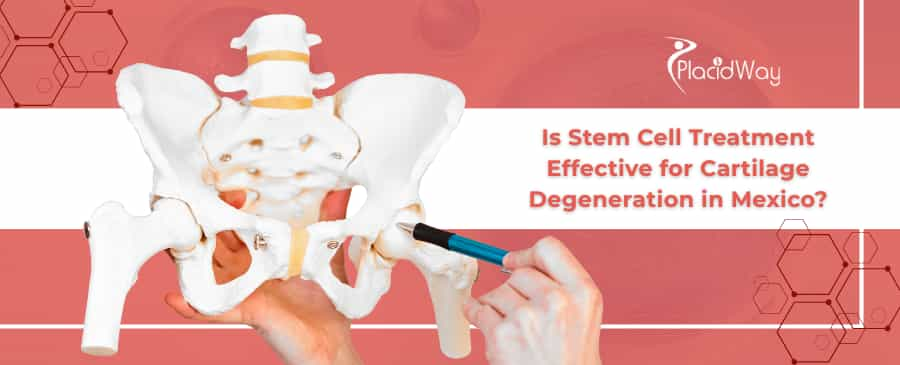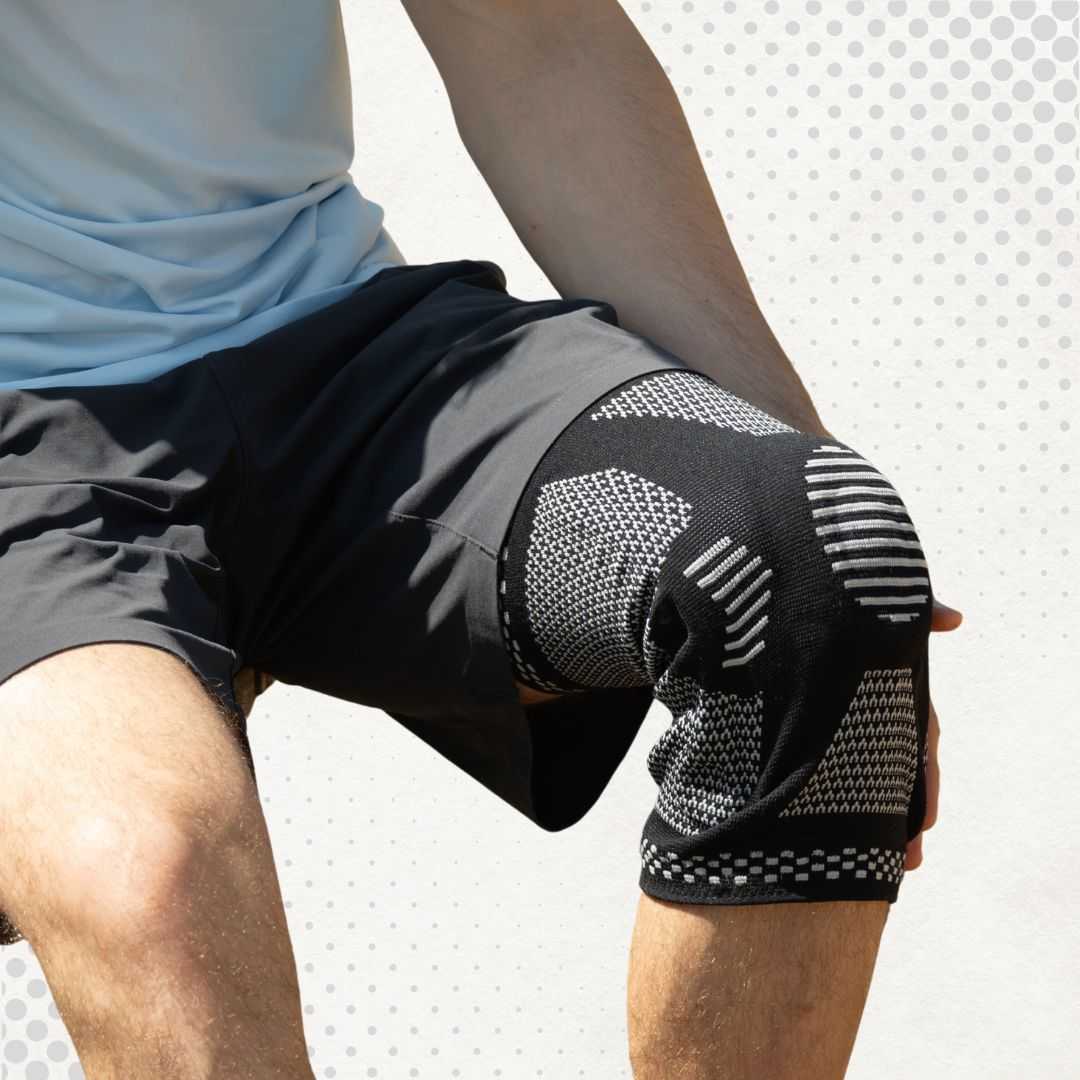Cartilage Repair With Stem Cells: Why Patients Choose Mexico

If you are dealing with the grinding pain of osteoarthritis or cartilage damage, you have probably heard the buzz about stem cell therapy. It is becoming one of the most talked-about alternatives to joint replacement surgery. But with high costs and strict regulations in the US and Canada, many people are looking south of the border.
Mexico has become a major hub for regenerative medicine, offering advanced treatments that are often unavailable or prohibitively expensive back home. The main question on everyone’s mind is: does it actually work? In short, yes, for the right candidate, it can be a game-changer. Mexico's regulatory environment allows clinics to use robust, multiplied stem cells that can offer stronger results than what is typically allowed in the US.
In this guide, we will cut through the noise and look at the real effectiveness, costs, and safety of getting stem cell treatment for cartilage degeneration in Mexico. We will explore how it helps repair joints, what you can expect to pay, and how to find a safe, reputable clinic.
What is stem cell therapy for cartilage regeneration?
Think of your cartilage as the shock absorber in your car. Over time, it wears thin, leading to bone-on-bone friction that causes pain. Stem cell therapy acts like a mechanic that doesn't just grease the parts but actually helps repair the damage. When stem cells are injected into a joint, like a knee or hip, they don't just turn into cartilage overnight. Instead, they act as "signaling" cells.
Once inside the joint, these cells release potent anti-inflammatory proteins and growth factors. This signals your body's existing cells to wake up and start repairing the tissue. It creates an environment where healing can occur, stopping the cycle of degeneration that causes arthritis pain. The goal isn't just to mask the pain, but to improve the structural integrity of the joint.
In Mexico, doctors often use Mesenchymal Stem Cells (MSCs), which are known for their ability to target inflammation and aid in tissue repair. This non-surgical approach is a major draw for patients who want to avoid the long recovery times and risks associated with total joint replacement surgery.
How effective is stem cell therapy for cartilage degeneration in Mexico?
The effectiveness of this treatment largely depends on the severity of your condition and the quality of the cells used. In Mexico, clinics are permitted to cultivate stem cells in a lab. This means they can increase the cell count into the millions before injecting them. This high dosage is a key reason why treatments in Mexico can be more potent and effective than in countries with stricter limitations on cell culturing.
For patients with mild to moderate osteoarthritis (Grades 1-3), the results can be life-changing. Many experience a significant decrease in stiffness and pain, allowing them to return to activities like walking, golfing, or hiking. However, for patients with Grade 4 arthritis—where there is absolutely no cartilage left—stem cells may help with pain but are unlikely to regrow a full cushion of cartilage.
It is important to have realistic expectations. While stem cell therapy is powerful, it is not magic. Improvement is usually gradual, happening over weeks and months as the inflammation subsides and the tissue environment improves.
What types of stem cells are used for cartilage repair in Mexico?
Mexico offers a wider variety of stem cell options compared to the US. The two main categories are Autologous (your own cells) and Allogeneic (donor cells). Umbilical Cord Tissue Stem Cells (Allogeneic) are the gold standard in many top Mexican clinics. These cells are "young" and haven't been exposed to aging or environmental toxins, making them highly active and potent for regeneration.
Bone Marrow Stem Cells are another option, where cells are harvested from your hip bone. While effective, the quality of these cells can decline with the patient's age. If you are over 60, your own stem cells might not be as strong as those from a healthy, newborn umbilical cord.
Adipose (Fat) Derived Stem Cells are also used. This involves a mini-liposuction to harvest fat, which is then processed to isolate the cells. While rich in numbers, some studies suggest bone marrow or umbilical cord cells may be better specifically for cartilage and orthopedic issues.
Is stem cell therapy for cartilage legal in Mexico?
A common misconception is that Mexico is a "wild west" for medical treatments. In reality, legitimate stem cell therapy is regulated by COFEPRIS (Comisión Federal para la Protección contra Riesgos Sanitarios). Reputable clinics must hold specific licenses to perform regenerative medicine procedures and to handle stem cells.
Unlike the US, where the FDA strictly limits the expansion (multiplying) of stem cells, Mexico's regulations allow for the culturing of cells. This is a critical difference. It allows Mexican clinics to administer treatments with tens or hundreds of millions of stem cells, potentially offering better therapeutic outcomes.
However, not every clinic follows the rules. It is vital to verify that the clinic you choose has a current COFEPRIS license. This ensures they adhere to sanitary standards and ethical sourcing of cells, particularly when using donor umbilical cord tissue.
What is the success rate of stem cell therapy for knees in Mexico?
Success in regenerative medicine is defined by a reduction in pain, increased range of motion, and a halt in the progression of damage. Most top-tier clinics in Mexico report that about 8 out of 10 patients see measurable improvements. These results are often tracked using standard orthopedic scoring systems like the WOMAC index.
Patients typically report that their "bad days" become less frequent and less severe. The success rate is highest in patients who are generally healthy, non-smokers, and who follow post-procedure rehabilitation guidelines. Factors like excessive weight or uncontrolled diabetes can lower the success rate by creating a hostile environment for the new cells.
It is worth noting that "success" doesn't always mean a perfect knee. For someone who could barely walk, being able to walk the dog around the block without pain is a massive success. Clinics should be transparent about these outcomes during your consultation.
How much does stem cell therapy for cartilage cost in Mexico?
One of the biggest drivers for medical tourism is cost. In Mexico, you can receive a high-quality treatment with a high cell count for a fraction of the price in the US. A standard treatment for one knee using 30-50 million stem cells might cost around $3,000 to $4,000 USD. If you need both knees treated or a higher dose (100 million+ cells), the price can go up to $6,000 or $8,000 USD.
In comparison, similar treatments in the US—often with fewer or uncultured cells—can cost anywhere from $5,000 to over $20,000. Below is a detailed comparison table to help you visualize the savings.
Cost Comparison: Mexico vs. USA
| Feature | Mexico Cost (Avg) | USA Cost (Avg) |
|---|---|---|
| Single Knee Injection | $3,000 - $4,500 | $5,000 - $10,000 |
| Both Knees (Double) | $5,000 - $7,500 | $12,000 - $25,000 |
| Cell Count | 50 - 100 Million+ | Variable (often lower) |
| Includes Hotel/Transport? | Often Yes | No |
Why is stem cell therapy cheaper in Mexico than in the US?
The lower price tag does not mean lower quality. The primary reason for the cost difference is the economic structure. Doctors' fees, facility rentals, and staff wages are significantly lower in Mexico. This allows clinics to offer premium services without charging US premiums.
Furthermore, the regulatory pathway for regenerative medicine in Mexico is more streamlined. In the US, the costs associated with FDA clinical trials and compliance are astronomical, and these costs are passed down to the patient. Mexican clinics can operate with lower overhead while still maintaining high safety standards.
Competition also plays a role. Cities like Tijuana and Guadalajara are medical tourism hotspots. Clinics compete for international patients, which helps keep prices competitive while driving up the quality of service and amenities offered.
What are the risks of stem cell therapy for cartilage?
Stem cell therapy is considered a minimally invasive procedure with a strong safety profile. The most common side effect is a temporary "flare-up" of pain or swelling in the joint immediately after the injection. This is actually a normal response, indicating that the healing process and immune response have been triggered.
Serious complications like infection are extremely rare when you choose a certified clinic. Reputable clinics use strict sterile protocols similar to any US hospital. Because mesenchymal stem cells are "immune-privileged," there is virtually no risk of your body rejecting the cells, even if they come from a donor (allogeneic).
However, there is a financial risk: the treatment might not work as well as you hoped. While success rates are high, individual biology varies. It is important to discuss your specific case with a doctor to understand if you are a good candidate.
How long is the recovery time after stem cell injection in Mexico?
One of the biggest advantages of stem cell therapy over knee replacement surgery is the downtime—or lack thereof. You won't be bedridden for weeks. In fact, most patients are encouraged to walk immediately after the procedure to help circulate the fluid in the joint.
While you can resume daily life quickly, you will need to avoid strenuous exercise for a few weeks. No running marathons or heavy squatting for at least a month. Your doctor will likely provide a specific protocol that might include physical therapy to help strengthen the muscles around the joint as the cartilage environment heals.
Patients typically start to feel the benefits of the stem cell injection around the 4 to 6-week mark, with improvements continuing for up to 6 months or a year as the tissues repair.
How do I choose the best stem cell clinic in Mexico?
Doing your homework is essential. Start by verifying the clinic's accreditation. Ask to see their COFEPRIS license number. A legitimate clinic will be happy to provide it. Look for clinics that specialize in orthopedics or regenerative medicine specifically, rather than a general spa that happens to offer stem cells.
Check the experience of the medical team. The best clinics are run by doctors who are often members of international regenerative medicine associations. They should be able to explain exactly where their cells come from (their lab source) and their viability rate.
Finally, read patient testimonials and watch video reviews. While every case is different, consistent positive feedback from past patients is a good indicator of reliable care and service.
Can stem cells regrow cartilage completely?
It is crucial to be wary of any clinic that promises to fully regrow a brand-new knee. Once cartilage is completely gone (bone-on-bone), it is very difficult to bring it back to its original state. Stem cells are not magic seeds that grow a new joint.
However, for patients with remaining cartilage, stem cells can help thicken and improve the quality of that tissue. They repair micro-tears and improve the density of the cartilage matrix. The primary benefit for many severe cases is the anti-inflammatory effect, which eliminates pain even if the X-ray doesn't show a "perfect" looking knee.
The goal is functional restoration and pain relief, which can delay or eliminate the need for aggressive surgery like a knee replacement.
What conditions can be treated with stem cells in Mexico?
While cartilage degeneration in the knee is the most common reason patients travel, the applications are broad. Stem cell therapy is effective for almost any joint in the body, including hips, shoulders, and ankles. It is frequently used for sports injuries like meniscus tears or partial tendon tears that aren't healing on their own.
Beyond orthopedics, many clinics in Mexico treat systemic autoimmune conditions like Rheumatoid Arthritis. In these cases, stem cells are often given intravenously (IV) rather than just into the joint, helping to modulate the entire immune system and reduce systemic inflammation.
This versatility is due to the nature of mesenchymal stem cells, which seek out inflammation in the body and attempt to repair it, wherever it may be.
How many stem cell treatments are needed for cartilage repair?
Unlike cortisone shots that you might need every few months, stem cell therapy is designed to be a long-term solution. A single high-dose injection is often enough to provide relief for years. The cells continue to work for months after the procedure.
In some cases, particularly if the joint was in very bad shape, a doctor might recommend a "booster" injection of PRP (Platelet Rich Plasma) or a smaller dose of stem cells 6 to 12 months later to maintain the results. However, this is not standard for everyone. The high cell counts available in Mexico mean that one visit is usually sufficient to get the therapeutic effect.
This "one-and-done" potential makes the travel to Mexico even more cost-effective, as you aren't committing to monthly trips.
Is the procedure painful?
Fear of pain is natural, but this procedure is quite simple. If you are getting bone marrow stem cells, the extraction from the hip is done with local anesthesia, so you feel pressure but not sharp pain. If you are receiving umbilical cord stem cells, there is no harvesting from your body at all—just a simple injection into the joint.
The injection into the knee or hip is comparable to getting a flu shot or a cortisone injection. The area is numbed beforehand. Some patients report a feeling of "fullness" or pressure in the joint immediately after the fluid is injected, but this dissipates quickly.
You won't need general anesthesia, meaning you remain awake and can communicate with the doctor throughout the entire short process.
What should I expect during the consultation?
Your journey typically starts before you even fly to Mexico. Most reputable clinics offer a free virtual consultation. You will send them your MRI or X-ray images digitally. The medical team will review these to determine if you are actually a candidate.
They will look at the amount of joint space left. If they approve you for treatment, they will explain the protocol: how many million cells they recommend and if they suggest combining it with PRP or Ozone therapy. This is the time to ask about costs, logistics, and what specific results you can expect based on your unique anatomy.
Once you arrive at the clinic, you will have a physical exam and final review before the procedure begins. The transparency during this phase is a hallmark of a trustworthy medical provider.
Do Mexican clinics use FDA-approved stem cells?
This is a critical distinction. The FDA (US Food and Drug Administration) has not approved most stem cell therapies for general orthopedic use in the United States. This is why US treatments are often limited in scope and effectiveness. Mexican clinics operate under the jurisdiction of COFEPRIS.
While they don't have "FDA approval" (because they aren't in the USA), this is actually an advantage for many patients. It allows access to therapies that are years ahead of what is available in the US. However, top Mexican clinics often follow FDA guidelines for Good Manufacturing Practices (GMP) in their labs to ensure the highest safety and quality standards, even while operating under their own national regulations.
Don't look for FDA approval stickers; look for COFEPRIS licensing and GMP lab certifications.
Are you ready to explore affordable, world-class stem cell options?
If you are tired of living with joint pain and want to find a safe, effective solution, PlacidWay can help. We connect you with top-rated, accredited medical providers in Mexico and around the world. Get a free quote and start your journey to a pain-free life today.


.png)














Share this listing